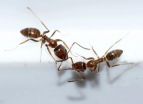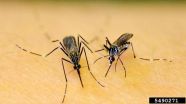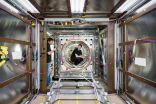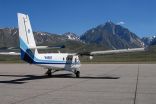(Press-News.org) When ants go exploring in search of food they end up choosing collective routes that fit statistical distributions of probability. This has been demonstrated by a team of mathematicians after analysing the trails of a species of Argentine ant. Studies like this could be applied to coordinate the movement of micro-robots in cleaning contaminated areas for example.
Scientists have yet to discover the mechanisms explaining how flocks of birds, shoals of fish, lines of ants and other complex natural systems organise themselves so well when moving collectively.
To tackle this problem, researchers from Spain and the U.S. have analysed the movements of Argentine ants (Linepithema humile, an invasive species in many parts of the world) while they forage or explore an empty space (a petri dish) and propose a model explaining how they form their routes.
The authors, whose study has been published in the journal Mathematical Biosciences, started by observing the behaviour of ants individually and subsequently as a collective group. They recorded all their movements and based on these experiments, detected that the random changes in the direction of the insects follow mathematical patterns.
"To be more specific, they are a mixture of Gaussian and Pareto distributions, two probability functions which are commonly used in statistics, and that in this case dictate how much the ant 'turns' at each step and the direction it will travel in," María Vela Pérez, researcher at the European University in Madrid and co-author of the study, explains to SINC.
The scientists had already verified in previous studies that the 'persistence' of ants, or rather, their tendency not to change their direction while there are no obstacles or external effects, together with the 'reinforcement' occurring in areas which they have already visited (thanks to the pheromone trail that they leave) are two factors which determine their routes as they forage.
Now, with this data they have been able to create the model describing the collective movement of the ants on a surface. The numerical simulations on the computer show the formation of ramified patterns very similar to those observed in the petri dishes during the real experiment with ants.
Applications in small robots
Aside from the mere biological interest, these advances could be applied in diverse technological fields. "For example, they could be used to design the coordination of a group of micro-robots or small robots to clean a contaminated area or other tasks," Vela Pérez points out.
The researcher reminds us that the study of the modelling, organisation and coordination of the animal behaviour is a clear example of multidisciplinary collaboration: "biologists participate to perform the experiments in the laboratory and provide real data, in coordination with mathematicians and physicists who propose and solve the models".
One of the researchers who has participated in this study is Marco A. Fontelos from the Institute of Mathematical Sciences (ICMAT), who has also co-authored another study regarding the formation of lines of ants that "can be characterised as bifurcations or trailblazing when the concentration of pheromones exceeds a certain value". The theoretical model is based on partial differential equations and the details are published in the Journal of Mathematical Analysis and Applications.
INFORMATION:
References:
M. Vela-Pérez, M. A. Fontelos, S. Garnier. "From individual to collective dynamics in Argentine ants (Linepithema humile)". Mathematical Biosciences 262: 56-64, 2015.
Marco A. Fontelos, Avner Friedman. "A PDE model for the dynamics of trail formation by ants". Journal of Mathematical Analysis and Applications 425 (1): 1-19, 2015.
Scientists at a U.S. Army research center have modified an assay that tests whether or not a sample of mosquitoes harbors the virus responsible for the disease known as chikungunya (CHIKV), long a problem in the Old World tropics but recently established in the Americas. Their assay is described in an article in the Journal of Medical Entomology.
Health workers now have a quick way to detect the presence of the CHIKV virus within an hour, rather than waiting for results of laboratory tests that take days, or even weeks. It's done with a chemical dipstick, the same kind ...
KNOXVILLE--The reaction most people have when they hear the word bacteria is rarely a good one.
While it's true that food- and water-borne bacteria cause untold illnesses and even death around the world, a team of researchers from the University of Tennessee, Knoxville, and Oak Ridge National Laboratory has found a way to use bacteria to help prevent some of the very symptoms most people associate with them.
Terry Hazen, the Governor's Chair for Environmental Biotechnology, a joint UT-ORNL appointment, is working with a team of researchers who have developed a method ...
MAYWOOD, IL - Among the deadliest cancers is a rare malignancy called mesenchymal chondrosarcoma, which begins in cartilage around bones and typically strikes young adults.
Ten-year survival has been reported to be as low as 20 percent. But a Loyola University Medical Center study has found survival is not as dismal as prior reports. Among 205 cases examined, more than half (51 percent) of patients survived at least five years, and 43 percent survived at least 10 years, the study found.
The study by senior author Lukas Nystrom, MD, and colleagues was reported at the Mid-America ...
May 12, 2015 - It's portrayed in movies again and again - a character gets rejected by someone attractive and then falls willingly into the arms of someone perhaps less attractive. According to a new study, it's not so simple: Rejection by an attractive man actually led women to socially distance themselves from an unattractive man, even when he offered acceptance.
"We hadn't expected to see derogation of the unattractive male when women had been rejected by the attractive male," says Geoff MacDonald of the University of Toronto and lead author of the new study in Social ...
COLUMBIA, Mo. - Down syndrome, the most common chromosomal disorder in America, can be complicated by significant deterioration in movement, speech and functioning in some adolescents and young adults. Physicians previously attributed this regression to depression or early-onset Alzheimer's, and it has not responded to treatments. Now, a researcher at the University of Missouri has found that Catatonia, a treatable disorder, may cause regression in patients with Down syndrome. Individuals with regressive Down syndrome who were treated for Catatonia showed improvement, the ...
This news release is available in German.
Magnetic fields easily penetrate matter. Creating a space practically devoid of magnetic fields thus presents a great challenge. An international team of physicists has now developed a shielding that dampens low frequency magnetic fields more than a million-fold. Using this mechanism, they have created a space that boasts the weakest magnetic field of our solar system. The physicists now intend to carry out precision experiments there.
Magnetic fields exist everywhere in the universe. Here on the Earth, we are permanently ...
RICHLAND, Wash - Researchers have demonstrated a new process for the expanded use of lightweight aluminum in cars and trucks at the speed, scale, quality and consistency required by the auto industry. The process reduces production time and costs while yielding strong and lightweight parts, for example delivering a car door that is 62 percent lighter and 25 percent cheaper than that produced with today's manufacturing methods.
In partnership with General Motors, Alcoa and TWB Company LLC, researchers from the Department of Energy's Pacific Northwest National Laboratory ...
Young children who hear more than one language spoken at home become better communicators, a new study from University of Chicago psychologists finds. Effective communication requires the ability to take others' perspectives. Researchers discovered that children from multilingual environments are better at interpreting a speaker's meaning than children who are exposed only to their native tongue. The most novel finding is that the children do not even have to be bilingual themselves; it is the exposure to more than one language that is the key for building effective social ...
New research published in Nature Communications led by Meiyun Lin of NOAA's Geophysical Fluid Dynamics Laboratory and NOAA's cooperative institute at Princeton University, reveals a strong connection between high ozone days in the western U.S. during late spring and La Niña, an ocean-atmosphere phenomena that affects global weather patterns.
Recognizing this link offers an opportunity to forecast ozone several months in advance, which could improve public education to reduce health effects. It would also help western U.S. air quality managers prepare to track these ...
LAWRENCE -- Political discussions conducted on social networking sites like Facebook mirror traditional offline discussions and don't provide a window into previously untapped participants in the political process, according to a new study that includes two University of Kansas researchers.
"Social networking is important, but what we've shown in political science is that the people who are using the Internet, be it Facebook, Twitter or whatever else for political activities, are really the same people who are politically active offline anyway," said Patrick Miller, a ...






